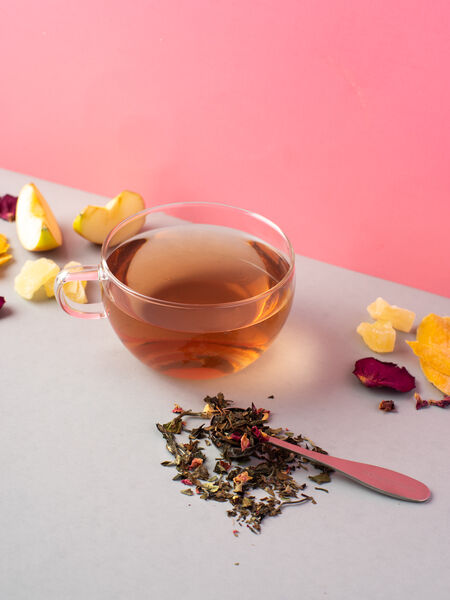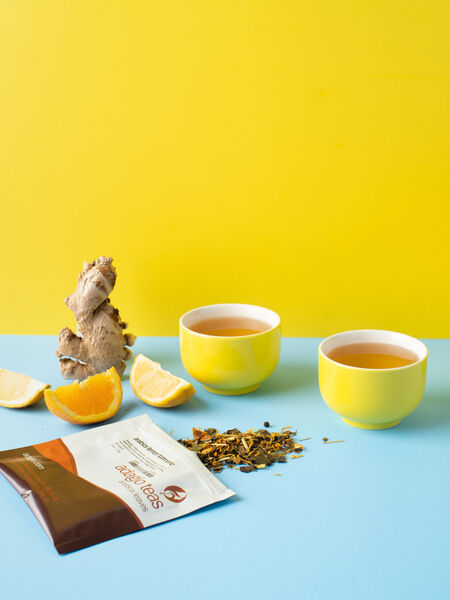Teacup Collecting: Styles, Tips, and Care


A delightful custom in the South is for friends to bring a teacup for the shower of a bride-to-be. That gesture provides a way for each friend to enjoy tea during the party, be served “her” cup whenever she visits, and contributed to the teacup collection of the new bride both for future parties and for the aesthetic beauty a collection provides.
You can begin a teacup collection the same way, or as part of any type of celebration (birthdays, graduations, job promotions, baby showers.) Just ask, in lieu of flowers or other gifts, ask for teacups. Or you can join the many sleuths of this world hunting for The Perfect Teacup.
First, Decide What to Collect
Teacups, with or without saucers, can be found in mind-numbing variety:
• Color (classic blue and white, Yixing, or a favorite color with decorative details hand-painted or decaled on, the most common decoration of European-style cups and saucers with everything from flowers to landscapes, cherubs to royals, produce, or pretty patterns and designs.
• Finish (glazed, unglazed, lustreware, smooth or patterned, or other finishes)
• Material (porcelain, bone china, ceramic, stoneware, glazed earthenware like majolica, or teacups purchased purely for décor like metal or wood)
• Style (with handles or not, cups with feet and/or decorative handles, pedestal or pompadour teacups that are narrow at the bottom, swirl patterns impressed into the porcelain clay.)
• Shape (recreations of nature like animals, flowers, birds; abstract, wabi-sabi, or geometrics like square, round, rectangular, and shaped like everything in between from houses to books to beehives.)
• Function (matcha bowls, Yixing gungfu thimble cups or guywan cups, traditional afternoon teacups, yerba mate gourds, straight-sided Japanese yunomi or other Asian small round glazed ones and ceremonial cups for weddings and other special occasions.)
• Children’s or Miniature Teacups
• Themed teacups (regular size) with art from animated films, famous tourist sites, or commemorations (How often does a ruler reign for 70 years?)
• Manufacturer (for example, afternoon tea-style cups from Lomonosov, Meissen, Bernardaud, Aynsley, Wedgewood, Lenox, and other fine porcelain makers around the world.)
• Modern (clear, strong, and light borosilicate glass or colored glass for Moroccan and Turkish teas, and everything bright and fun from polka dots to plaid.)
• By Artist (From Picasso to Jeff Koons, famous artists design dessert plates, teacups, and teapots.)
• By Country or Custom (Japan, China, Korea, Taiwan, Italy, France, Great Britain, Bavaria, Germany, Russia, and many other tea drinking and porcelain-making countries.
Where to Buy?
For fresh looking, modern selections, of course we suggest:
Fine porcelain teaware is available at department stores, upscale home accessories shops, thrift stores, garage sales, and antique shops of all kinds; online sites like Etsy or similar and in your grandma’s attic. You might find breathtaking Limoges or Haviland, Royal Albert, or souvenirs from everywhere in the world. Ask!
Adagio and Master's provide a large range to choose from online as well in different materials and colors!
Expect to pay anywhere from a few dollars to $20 for fun to fine examples, or $25 to $100 for fine examples 50 years or older. To get the most from your dollar, check for worn rims, chips or cracks, and faded decoration. If the cup is for your own use, experiment lifting and putting it down; some teacups from the 19th century have handles too small to wrap a finger around, so you need to use thumb and forefinger to lift it up.
How Store Your Teacup Collection
Traditional sideboards and china cabinets are ideal as are bookcases, especially legal bookcases with glass doors; individual Lucite or wood shelves on the wall are perfect for displaying small items.
If you live near traffic or in earthquake country, avoid damage from wobbles by placing a chamois cloth between the cups and saucers or stick on museum or quake wax protectors. You can also prevent cracks or breaks if you stack cups and saucers provided you add material between cup and saucer like soft napkins, acid-free paper or polyethylene foam.
How to Care for Your Collection
• Never use soap on fine porcelain or bone china. Rinse cups and saucers by hand, and wipe dry with a soft cloth.
• For modern ceramic or borosilicate glass, handwashing is best but some can be cleaned with mild soap or the dishwasher.
•Dust frequently, even when your displays are in cabinets. Use the softest cloth or a sable paintbrush. Cover the metal band between the handle and hairs, and brush the porcelain lightly to avoid pushing dirt particles into the teacup or saucer, especially those that are unglazed.
• Avoid hanging cups on hooks which can scratch the handles or even break them. Modern ceramic ones are fine on hooks.
• Avoid putting the rim upside down onto the saucer; it causes scratches. The most vulnerable places on a cup are the handles and the rims.
• Swap your displays with others you own. By rotating them often you’ll change up the décor and remind yourself of all the delights you’ve acquired.
• When not in use or display, store them safely. Wrap cups separately from the saucers with a soft cloth like an old T-shirt or soft cotton clothing. Avoid wrapping porcelain with newspapers as the ink stains!)
• Pack carefully in ultra-durable plastic bins, not cardboard which can get wet, crushed, or worse. Cardboard dividers inside a bin are okay or buy quilted fabric cup and saucer holders in upscale dinnerware shops for your most expensive teacups.
• Label every bin.
This article is purely an overview; entire books have been written about every category, style, manufacturer, and creator of teacups, so check out your local bookshop or library for books to learn more.
Have fun!
